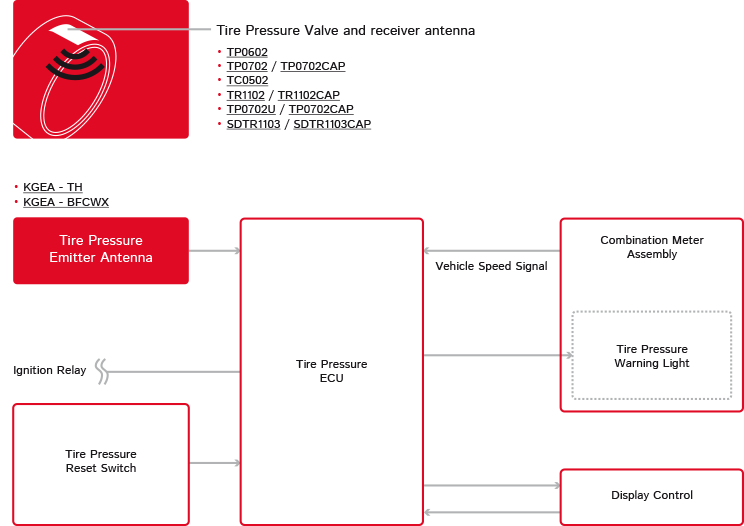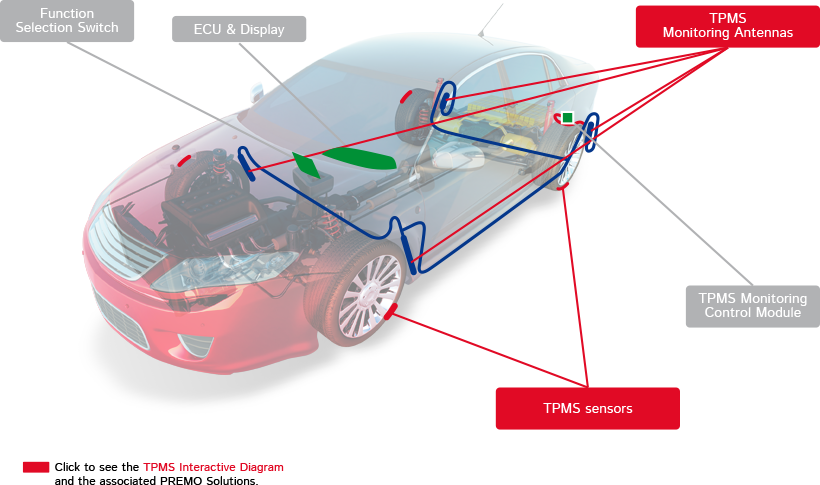TPMS (Tyre Pressure Monitoring Systems)
TPMS Definition
TPMS is one of the largest applications in RFID devices, been in the field for more than 25 years. Nowadays, TPMS market has experienced significant growth driven by stringent safety regulations, becoming from a high-end car passive safety option to a standard in most of current vehicles.
A TPMS systems concern two main elements: Passive safety (under pressure can cause accidents) and fuel-saving, CO2 emission reduction, and increased useful life of the tire.
In TPMS systems an RFID transponder is built inside a pressure valve. An emitter antenna, located in the car body, wake-up the transponder using radiofrequency activation signal (125kHz). After this wake-up, the valve transmits all the stored information (regarding tire position, pressure, and temperature) to the vehicle ECU using 433MHz frequency.
How does the TPMS System work?
We disclose in this video how the Tyre Pressure Monitoring System technology works and what are the main considerations to take in mind in order to select the right RFID transponder coils inside the TPMS system.
PREMO RFID Transponder Coils for Tyre Pressure Monitoring Systems (TPMS)

PREMO helps you meet industry challenges with its leading designs that include a broad range of RFID transponder coils for TPMS, specially designed to support the hard conditions suffered in the vehicle tires such as mechanical stress, corrosion effects, and operation in temperature ranges from -40°C to +125°C.
PREMO offers a wide range of SMD transponders and smart emitter antennas very well suited for these TPMS systems.
Our wide range of innovative SMD Transponders and smart emitter antennas are manufactured with high magnetic properties and high-temperature stability. Their tiny size, from 11mm (SDTR1103/SDTR1103CAP, TR1102/TR1102CAP) to 6-7mm (TP0702/TP0702CAP, TP0702U/TP0702UCAP) and even of 5mm (TC0502) allow include them in pressure valve of most recent TPMS systems.



